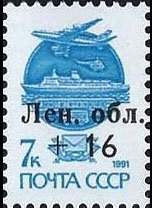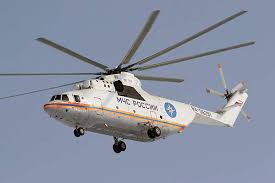Stamp: Leningrad region (Russia 1992)
Leningrad region (Russia 1992)
01 March (Russia ) within release Local issues of the Russian Federation goes into circulation Stamp Leningrad region face value 7+16 Russian kopek
| Stamp Leningrad region in catalogues | |
|---|---|
| Michel: | Mi: RU LO1 |
Stamp is vertical format.
Типографская надпечатка на марке Mi:SU 6178IICwAlso in the issue Local issues of the Russian Federation:
- Stamp - Saint-Petersburg face value 353;
- Se-tenant - Saint-Petersburg face value 200+500;
- Stamp - Saint-Petersburg face value 200;
- Stamp - Leningrad region face value 7+18;
- Stamp - Saint-Petersburg face value 7+16;
- Se-tenant - Saint-Petersburg face value 353+450;
- Stamp - Leningrad region face value 7+16;
- Stamp - Saint-Petersburg face value 7+18;
- Se-tenant - Saint-Petersburg face value 14+34;
- Stamp - Saint-Petersburg face value 500;
- Se-tenant - Leningrad region face value 14+34;
- Stamp - Saint-Petersburg face value 450;
Stamp Leningrad region it reflects the thematic directions:
An aircraft (pl. aircraft) is a vehicle that is able to fly by gaining support from the air. It counters the force of gravity by using either static lift or the dynamic lift of an airfoil, or, in a few cases, direct downward thrust from its engines. Common examples of aircraft include airplanes, rotorcraft (including helicopters), airships (including blimps), gliders, paramotors, and hot air balloons.Part 1 (Definitions and Abbreviations) of Subchapter A of Chapter I of Title 14 of the U. S. Code of Federal Regulations states that aircraft "means a device that is used or intended to be used for flight in the air."
Aviation is the practical aspect or art of aeronautics, being the design, development, production, operation and use of aircraft, especially heavier than air aircraft. The word aviation was coined by French writer and former naval officer Gabriel La Landelle in 1863, from the verb avier (synonymous flying), itself derived from the Latin word avis ("bird") and the suffix -ation.
A helicopter is a type of rotorcraft in which lift and thrust are supplied by horizontally spinning rotors. This allows the helicopter to take off and land vertically, to hover, and to fly forward, backward and laterally. These attributes allow helicopters to be used in congested or isolated areas where fixed-wing aircraft and many forms of short take-off and landing (STOL) or short take-off and vertical landing (STOVL) aircraft cannot perform without a runway.
A ship is a large watercraft that travels the world's oceans and other sufficiently deep waterways, carrying passengers or goods, or in support of specialized missions, such as defense, research and fishing. Historically, a "ship" was a sailing vessel with at least three square-rigged masts and a full bowsprit. Ships are generally distinguished from boats, based on size, shape and load capacity.
Transport or transportation is the movement of people, animals and goods from one location to another. Modes of transport include air, rail, road, water, cable, pipeline and space. The field can be divided into infrastructure, vehicles and operations. Transport is important because it enables trade between people, which is essential for the development of civilizations.
A vehicle (from Latin: vehiculum) is a mobile machine that transports people or cargo. Typical vehicles include wagons, bicycles, motor vehicles (motorcycles, trucks, buses), railed vehicles (trains, trams), watercraft (ships, boats), aircraft and spacecraft. Land vehicles are classified broadly by what is used to apply steering and drive forces against the ground: wheeled, tracked, railed or skied. ISO 3833-1977 is the standard, also internationally used in legislation, for road vehicles types, terms and definitions.






